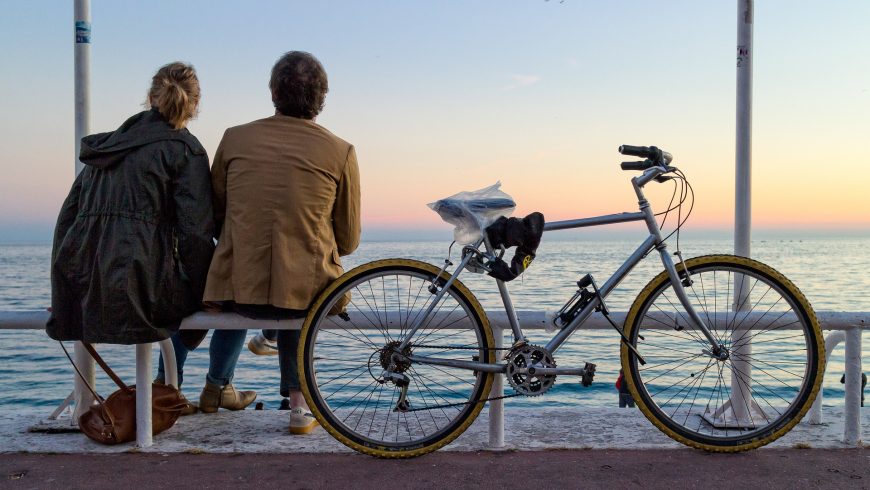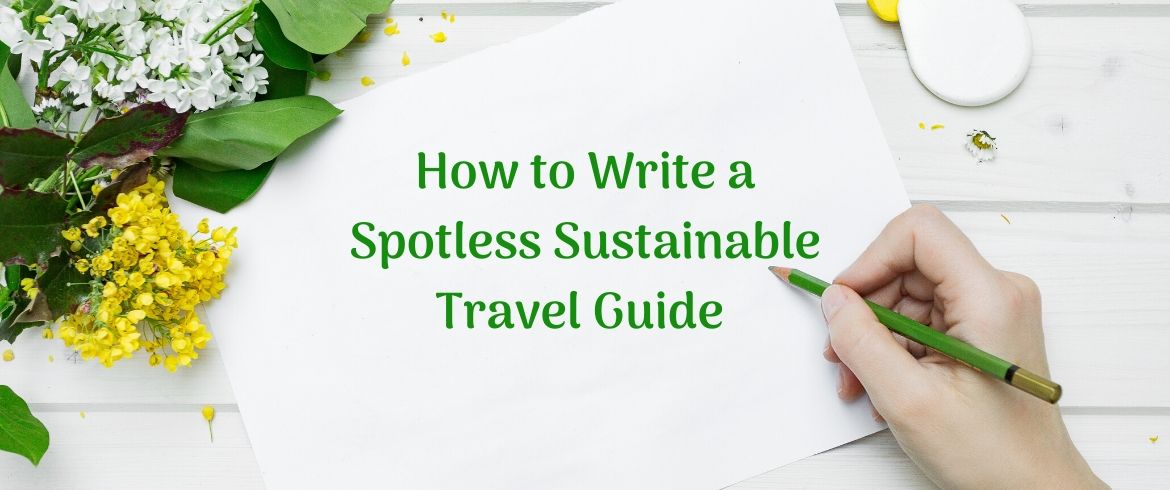Writing a travel guide carries a lot of responsibility. You’re in charge of helping people prepare and organize for their trip, as well as have a good time. But writing a sustainable travel guide is an even more serious task. You’re making sure people realize how little it takes to make the world a better and healthier place to live.
So, if you want to write a sustainable travel guide but aren’t sure how just keep reading. We’ll break down the essential points of a sustainable guide and things you have to cover.
Let’s get started.

1. Cover The Transportation
Just like any other travel guide, your sustainable travel guide has to focus on the type of transportation to be used.
Make sure you write about the biggest polluters and types of transportation to most damage the air and water:
Give the travelers a tip on less damaging forms of transportation:
- public transportations such as trains and buses
- riding a bike instead of taking a rent-a-car
- traveling longer to be more eco-friendly
Give guidance on renting a bike, buying a train ticket, and using public transportation in the target country.

2. Food & Drinks Equipment
In order to be sustainable on your trip, you have to think in advance. Many travelers forget the impact of plastic waste and the hazardous effect it has on the planet.
This is why you have to cover this point in your sustainable travel guide.
Make sure you give advice such as:
- bring a glass water bottle and don’t buy single-use plastic bottles of water
- use a cloth shopping bag and avid using single-use plastic bags
- bring your reusable food containers and don’t buy single-use plastic food containers
Let them know they’ll reduce plastic waste and make a positive impact while they’re traveling.
3. Choose Where & What to Eat
Another majorly important factor in the sustainability movement is that you learn the best way to be sustainable by choosing where and what to buy. This is why your sustainable travel guide needs to have a separate point about this exact issue.
In your travel guide, tell the readers to avoid:
- big fast-food chains
- big supermarket chains
- no-local businesses

All of the above are damaging for the local business and economics. They’re also the biggest polluters.
Instead, advise the readers to do the following:
- buy locally grown food
- shop on local markets and food stands
- eat in restaurants that are small and use locally grown food
- support farmers markets
Also, don’t forget to mention the impact of the meat & dairy industry. Plant-based food is better for the environment so motivate your readers to lower their use of animal products.
4. Choose Accommodation Wisely
Accommodation is another important factor that you have to cover in your travel guide. Your readers need to understand how to find eco-friendly accommodation and what are their options.
So, display all their options and give them a choice to make:
- green hotels: There are certain hotels that are focused on staying green. This means that they use sustainable power sources, they have a special laundry policy, and everything they do is focused to make as less damage as possible.
- eco-friendly apartments or B&B: staying at an eco-B&B or another sort of private accommodation is a great option. They’re small, local, and don’t make nearly as much damage as big hotel chains.
Motivate your readers to make smart accommodation choices and help them realize the importance of the decisions they make.

Final Thoughts
A sustainable travel guide needs to be open and direct. Don’t hesitate to point out the things that are wrong with modern traveling and invite people to stay open-minded.
The 4 points above are the base for every sustainable travel guide. Use them to write a spotless one and ensure more people stay on the side of sustainable traveling.
Cover image: Photo by Neven Krcmarek on Unsplash





